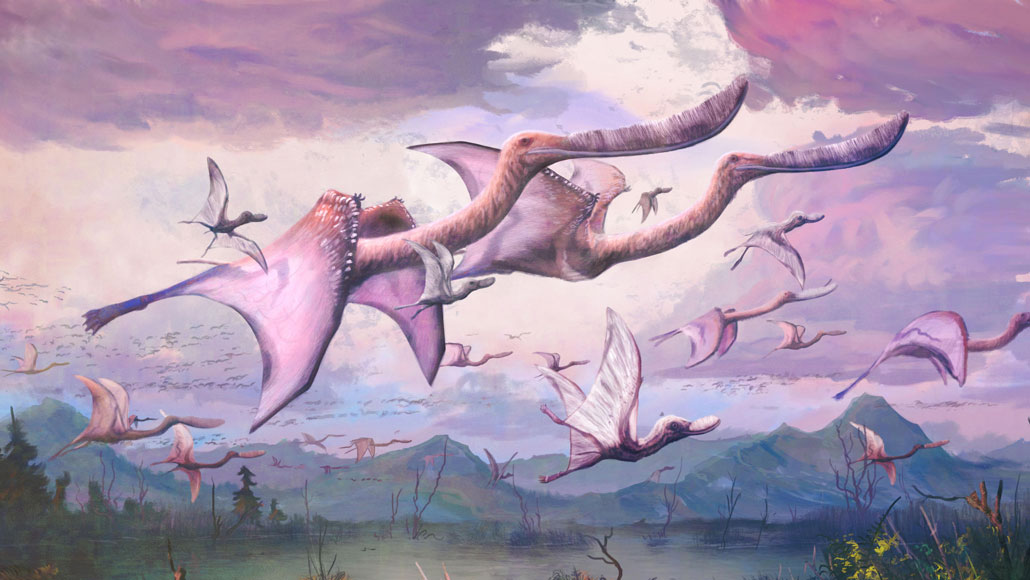Pterosaurs may have been able to fly as soon as they hatched
A fossil analysis shows the hatchlings had a stronger bone crucial for lift-off than adults

In this artist’s rendition, flamingo-like Pterodaustro guinazui fly against the backdrop of Early Cretaceous Argentina. New research suggests hatchlings of P. guinazui could fly the moment they emerged from their shells.
Mark Witton